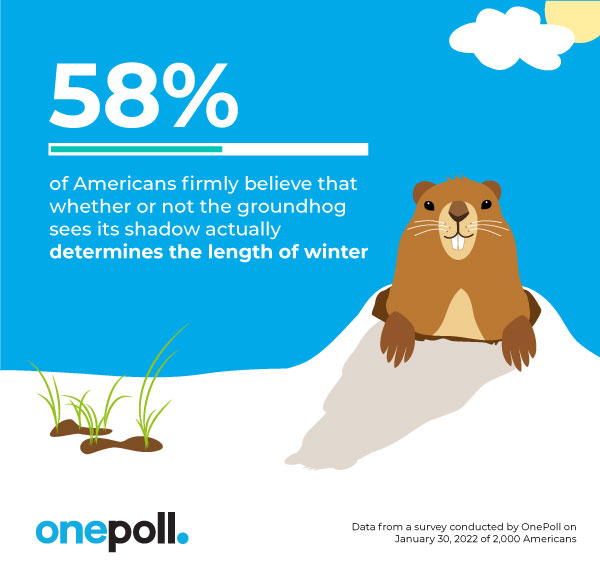The majority of Americans are more likely to trust a rodent than their local weatherman.
That’s according to a new OnePoll survey of 2,000 adults, which found that 58% of those surveyed agree that whether or not the groundhog sees its shadow on Groundhog Day actually does determine if there will be six more weeks of winter.
Over a fourth of those polled strongly agreed with this statement.
The central figure in this tradition is a groundhog named “Punxsutawney Phil.” Since the average lifespan of a groundhog is about six years, the name is attached to a monolithic organization of different groundhogs who trot out once a year in Gobbler’s Knob to perform their duty.

So the legend goes, if Phil sees his shadow and gets spooked, he’s predicted six more weeks of winter.
Unfortunately, Phil may not be very good at his one job. According to Live Science, he’s only correct 39% of the time; fewer odds than a coin flip.
Still, that won’t deter the six in ten Americans who love and believe in the tradition and since COVID-19 has changed the world so drastically over the last two years, maybe it’s okay to have this one nice thing to enjoy every year.
In the words of Phil Connors from Harold Ramis’ 1993 classic film “Groundhog Day,” “When Chekhov saw the long winter, he saw a winter bleak and dark and bereft of hope. Yet we know that winter is just another step in the cycle of life. But standing here among the people of Punxsutawney and basking in the warmth of their hearths and hearts, I couldn't imagine a better fate than a long and lustrous winter.”
![]()




